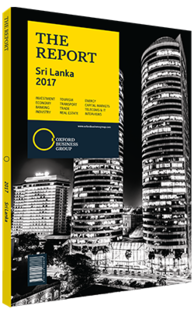Global interest in Sri Lanka's sovereign bonds suggests growing investor confidence
Strong demand for Sri Lankan sovereign bonds is broadening the government’s funding options, while indicating rising investor confidence in the country’s economic outlook and reform programme.
Strong Demand
Working with a range of international financial institutions, including Citigroup, HSBC and Deutsche Bank, the Central Bank of Sri Lanka (CBSL) successfully floated a $1.5bn, 10-year sovereign bond in May 2017, in the country’s 11th US dollar-denominated issuance in 10 years. The bond had an initial price guidance of 6.63%, but strong demand from reputable investors in Asia – and an order book of over $7.5bn – allowed the CBSL to tighten the price to 6.25%, eventually falling to 6.20% as New York markets opened and demand from North America flooded in. The final order book topped $11bn, making the issuance more than seven times oversubscribed, with over 500 accounts bidding. The geographical spread of the issuance underlined the global nature of investor interest in Sri Lanka, with particularly strong bids coming from developed markets. Some 58% of final allocations went to the US, 20% to Europe and 22% to Asia. Fund managers led the issuance, buying up 83% of issued bonds, with the rest going to banks (9%), pension and insurance funds (5%), and other investors (3%).
Market Window
The timing of the release was planned for two days after the US Federal Open Market Committee published a report stating that the US labour market was strengthening, fundamentals underpinning consumption remained robust and inflation was running close to target. As well as bolstering broader investor confidence, these findings also led the US Federal Reserve to put off increasing interest rates, a boost for bond markets. The issuance came a day after the IMF agreed to release the latest tranche of Sri Lanka’s $1.5bn funding facility agreed to in 2016 – a vote of confidence from the institution for the country’s reform programme and a fillip for strained government finances. It also coincided with changes to the country’s sovereign bond trading rules, designed to improve transparency and liquidity, and attracting more investors in the medium term. These included swifter reporting of repurchase deals and the use of a Bloomberg platform for trades. The government is also working to introduce a central counterparty for bond trading (as with equities), a monthly bond auction through a monetary board and an overhaul of regulation to improve market discipline.
Ratings
Despite strong demand and Sri Lanka’s promising emerging market status, all three major credit ratings agencies ranked the issuance as highly speculative. Moody’s rated the bond “B1” with a negative outlook, Standard & Poor’s (S&P) rated the bond as “B” with a stable outlook and Fitch Ratings “B+” with a stable outlook. Nonetheless, investor appetite for the Sri Lankan bonds suggests that markets are more upbeat about the outlook than ratings agencies would suggest, especially due to the more cautious ratings approach being taken since the global financial crisis. At the time of the issuance, yields on the Sri Lankan paper were slightly below those on 10-year Indian sovereign bonds, and considerably below those of Mexico and former investor stronghold Brazil, for example.
Investor Interest
However, investors are picking up on positive signs, including steady economic growth; new momentum behind infrastructure projects, such as the Western Region Megapolis Planning Project and the Hambantota Port and Industrial Zone; and the IMF package supporting fiscal tightening and structural reform.
While a slower than expected disbursement of IMF funds may have encouraged the government to approach bond markets in the first place, news that the next instalment is coming, due to stronger progress on reform, may have boosted demand. The IMF praised the government’s progress on the landmark Inland Revenue Act, which should boost tax collection and strengthen the broader Sri Lankan economy over the longer term.
You have reached the limit of premium articles you can view for free.
Choose from the options below to purchase print or digital editions of our Reports. You can also purchase a website subscription giving you unlimited access to all of our Reports online for 12 months.
If you have already purchased this Report or have a website subscription, please login to continue.

